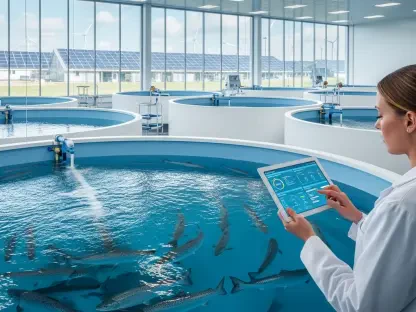The automotive manufacturing industry is witnessing a revolutionary shift with the advent of integrated die casting technology. Pioneered by Tesla, this innovative method promises to transform the production processes by integrating multiple automotive components into single, large die-cast parts. This integration is not only enhancing manufacturing efficiency and reducing costs but also significantly improving the structural integrity of vehicles, particularly electric vehicles (EVs).
The Evolution of Automotive Manufacturing
Traditional Manufacturing Challenges
For decades, automotive manufacturing relied on traditional methods such as stamping and robotic welding. These processes required numerous individual parts and complex assembly lines, making the production time-consuming and cost-intensive. Managing up to 79 different parts and handling 700-800 welding points created significant logistical and operational challenges for manufacturers. The complexity involved was not only costly but also prone to human error, often leading to production delays and quality control issues.
The traditional approach demanded extensive labor and intricate coordination across multiple stages of production. Factories were organized to accommodate these multifaceted processes, with each stage requiring specialized skills and equipment. This made scalability difficult and slowed down innovation, as changes in design meant overhauling substantial parts of the production line. Adding to these issues was the need for regular maintenance of the numerous machines and equipment required, further escalating operational costs and complicating logistics.
The Emergence of Integrated Die Casting
Integrated die casting, on the other hand, streamlines this process by consolidating parts into single die-cast components. This technological evolution reduces manufacturing time and simplifies the production process immensely. Instead of dealing with multiple small parts, manufacturers can now produce complex structures with minimal welding points. This shift signifies a profound change within the industry, promising a more efficient and cost-effective manufacturing approach that addresses many of the limitations inherent in traditional methods.
The advent of integrated die casting technology also brings a new level of precision to automotive manufacturing. By injecting molten aluminum into molds and rapidly cooling it, manufacturers can achieve tight tolerances and high-quality finishes that were previously unattainable. The reduced need for post-processing tasks like grinding and machining further streamlines operations and lowers costs. Moreover, the modularity in design facilitated by die casting allows for more straightforward adaptations in response to market demands, enhancing overall flexibility and speed-to-market.
Key Benefits of Integrated Die Casting
Reduction in Manufacturing Complexity and Time
One of the most notable advantages of integrated die casting is the substantial reduction in manufacturing complexity and time. By cutting down the number of parts from 79 to as few as 1-2, the assembly process becomes significantly faster. Additionally, the required number of welding points drops drastically from 700-800 to approximately 50, thereby streamlining production and reducing labor costs. This simplification not only accelerates production but also enhances consistency and quality control by reducing the opportunity for errors at various stages of assembly.
Furthermore, the minimized complexity means that manufacturers can utilize fewer workstations and employees to achieve the same, if not better, results. Automation of these streamlined processes can readily be implemented, leading to further reductions in labor costs and an uptick in production speeds. Less intricate production lines also promise reduced downtime for maintenance, significantly improving overall operational efficiency. This advantage is especially beneficial in an industry where time-to-market can make or break a company’s competitiveness.
Economic Advantages and Cost Reduction
Integrated die casting presents notable economic benefits. By simplifying the manufacturing process and reducing the need for robotic welding, overall production costs are significantly lowered. This cost reduction is particularly crucial in the highly competitive automotive market, where every dollar saved contributes to a company’s bottom line. The savings can be redirected towards other critical areas such as research and development, marketing, or improving worker conditions, thus providing a holistic advantage.
Lower production costs also enable car manufacturers to offer their products at more competitive prices, which could lead to an increase in market share. Cost savings can be passed on to consumers, making vehicles more affordable and potentially boosting sales volumes. Additionally, the reduced need for specialized labor and equipment cuts down on overhead expenses, allowing manufacturers to achieve higher profit margins. These economic advantages create a compelling case for the wide-scale adoption of integrated die casting in the automotive sector.
Technological Innovations in Die Casting
The Technical Process of Die Casting
Die casting involves using machines, particularly cold chamber types, to inject molten aluminum into molds. This process rapidly cools and solidifies the metal, creating precisely shaped parts. The analogy of administering an injection aptly describes the efficiency of die casting — slow initial progression followed by rapid formation resulting in high-quality metal components. This high level of efficiency is matched by the process’s ability to produce complex shapes with excellent dimensional accuracy, making it ideal for automotive applications.
The die casting process is also versatile, capable of producing parts of varying sizes and complexities. Manufacturers can adjust the parameters to suit specific needs, ensuring optimal customization for different vehicle designs. The use of aluminum not only provides excellent strength-to-weight ratios but also facilitates better thermal and electrical conductivity, important factors for advanced vehicular functions. Consequently, the end products are not only robust and reliable but also lighter, contributing to better fuel efficiency and performance, particularly in electric vehicles.
Adoption and Adaptation by Industry Leaders
Tesla’s adoption of integrated die casting has sparked a global interest in this technology. Major automotive manufacturers are now exploring its potential, looking for ways to incorporate it into their production lines. This trend is particularly noticeable in China, where advancements in die casting techniques have positioned the country as a leader in metal parts manufacturing. By embracing these innovations, China is setting new benchmarks in automotive production, thereby influencing global manufacturing standards.
The adaptation of integrated die casting by industry leaders signals a broader shift towards modernizing manufacturing processes. Automakers are continuously seeking ways to remain competitive in an evolving market landscape, and the incorporation of advanced technologies like die casting offers a strategic edge. Companies that were initially skeptical are now conducting trials and pilot projects to explore the feasibility of full-scale implementation. As these endeavors yield positive results, integrated die casting is poised to become a standard practice across the automotive industry.
Impact on Electric Vehicles (EVs)
Enhancing Vehicle Range and Performance
For electric vehicles, reducing weight is a critical factor in enhancing range and performance. Integrated die casting helps achieve this by replacing numerous parts with single, lightweight die-cast components. This weight reduction directly translates to improved battery efficiency and extended driving range, addressing a significant concern for EV consumers. The decreased mass also allows for smaller and more efficient battery packs, further optimizing the vehicle’s overall performance.
Moreover, the seamless integration of components provided by die casting reduces electrical resistance and improves thermal management, which are crucial aspects for EVs. Enhanced thermal properties mean better heat dissipation, essential for maintaining battery health and preventing overheating. Superior electrical conductivity ensures more reliable electrical flow, directly impacting the vehicle’s energy efficiency. Collectively, these technological advantages address multiple performance parameters, making EVs more viable and appealing to a broader consumer base.
Strategic Advantages in the Competitive EV Market
Adopting die casting technology also provides strategic advantages in the competitive EV market. Lower production costs and faster manufacturing cycles enable companies to bring vehicles to market more quickly. This agility is essential in an industry where technological advancements and consumer demands are constantly evolving. The ability to swiftly adapt and innovate offers a significant competitive edge, allowing manufacturers to meet market needs more effectively and efficiently.
The strategic benefits extend beyond mere cost and time savings. By reducing the number of parts and simplifying assembly, manufacturers can streamline their supply chains, minimizing risks associated with component shortages and logistics delays. This increased reliability and predictability in production schedules can improve overall business operations, enabling companies to plan and forecast with greater accuracy. This foresight is invaluable in a market as dynamic as electric vehicles, where first movers often capture substantial market share.
Global Trends and Future Prospects
Growing Inclination Towards Simplified Manufacturing
There is a clear industry-wide trend towards adopting simpler and more efficient manufacturing methods. Integrated die casting is at the forefront of this movement, offering solutions to many of the challenges faced by traditional automotive production processes. The shift to fewer parts and reduced assembly time is reshaping how vehicles are built. This movement towards simplification is gaining traction as manufacturers recognize the substantial benefits in terms of cost, time, and quality.
The global automotive industry is gradually moving towards a holistic approach that emphasizes sustainability and innovation. Integrated die casting meets these criteria by reducing waste and optimizing resource use. As companies strive to meet stringent environmental regulations, the reduced emission and energy consumption associated with die casting processes add to its appeal. The momentum towards simplified manufacturing is thus not only an economic decision but also an environmentally responsible one, aligning with broader societal goals.
China’s Role as a Global Supplier
The automotive manufacturing industry is undergoing a groundbreaking transformation with the emergence of integrated die casting technology. This pioneering method, championed by Tesla, aims to revolutionize how vehicles, especially electric vehicles (EVs), are produced. By integrating numerous automotive components into single, large die-cast parts, this technique seeks to enhance production efficiency dramatically. It not only cuts manufacturing costs but also significantly boosts the structural integrity of the vehicles.
Integrated die casting means that instead of assembling various small parts from different suppliers, manufacturers can produce substantial sections of a car in one go. This innovation leads to stronger, more reliable vehicle structures because the parts fit together more seamlessly. For electric vehicles, which require lighter yet sturdy constructions to extend their battery life, this technology is particularly beneficial.
Furthermore, this method assists in streamlining the assembly process, minimizing human error, and reducing the number of necessary components. Consequently, Tesla and other companies adopting this technology can expect faster production cycles, lower labor costs, and enhanced vehicle performance.









